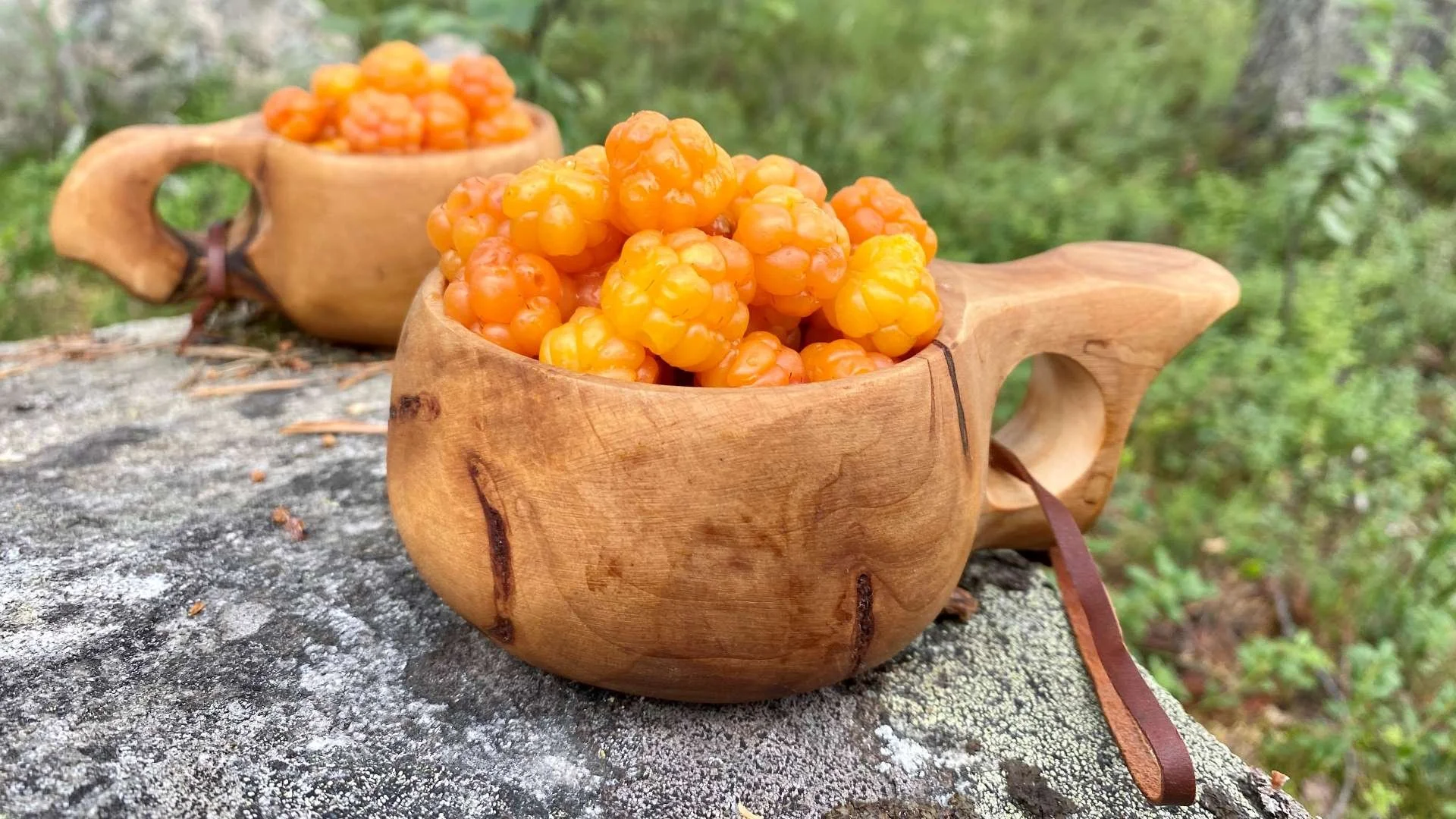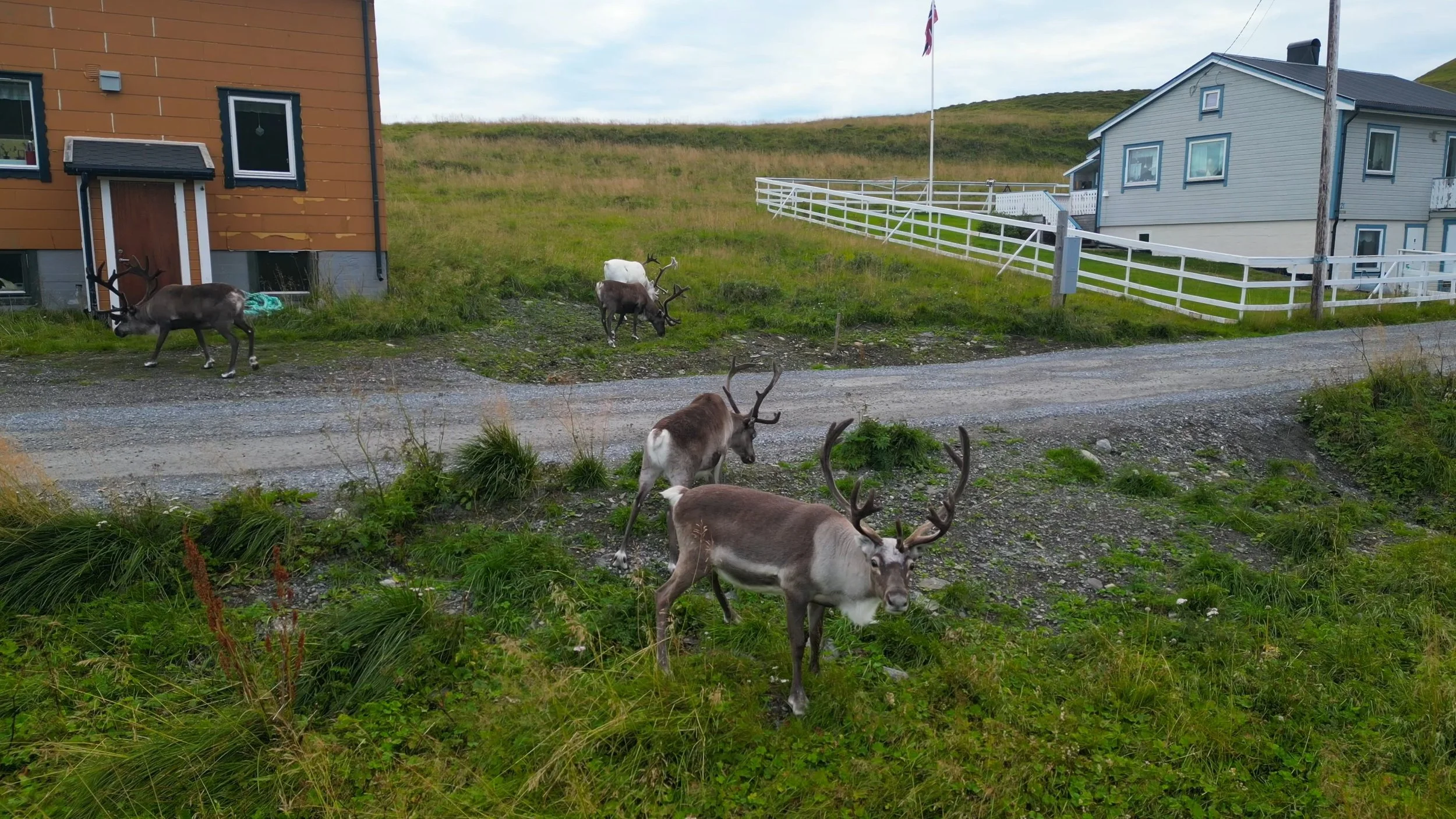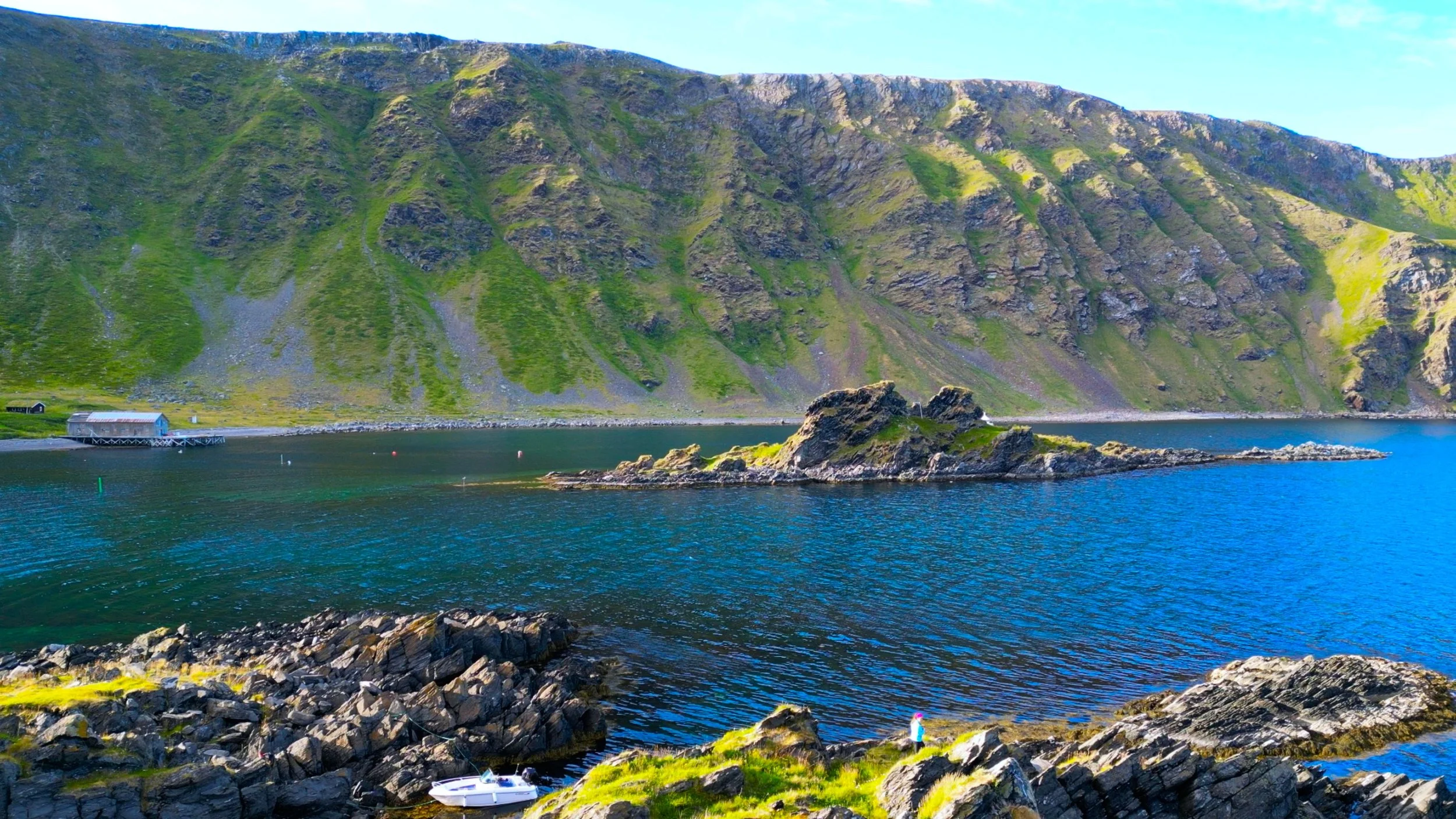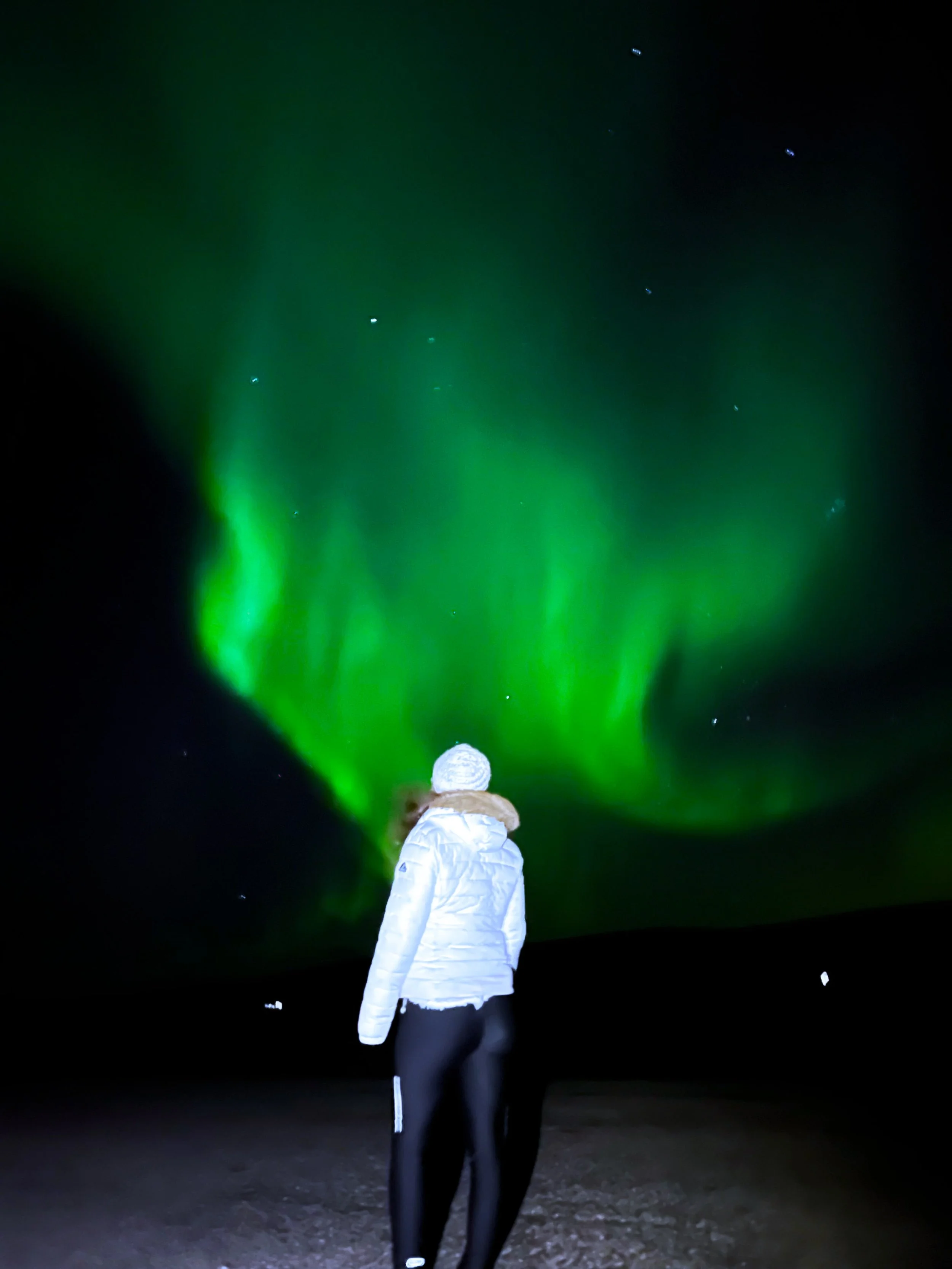The best time to visit Norway’s Northernmost point, the North Cape
Honningsvåg — the northernmost city of continental Europe (30 km from the North Cape)
You’ve dreamed of visiting the iconic North Cape, the northernmost point in mainland Europe. But between the crowds of tourists flocking in the summer and the frigid cold of winter, the timing just never seems right.
Read on to find out what each month has in store and the best times to visit North Cape without massive crowds while still catching either the Midnight Sun or Northern Lights. Whether you're looking for 24 hours of daylight, a chance to spot whales, or just some peace and quiet, I’ve got the lowdown to help you make the most of this bucket list destination.
Monthly Highlights & Natural Wonders
The landscape of the North Cape changes dramatically throughout the year. Here’s what to expect month by month:
Pay attention to the title’s colours:
● perfect month to visit the north cape
● good month to visit the north cape
● bad month to visit the north cape
JANUARY
photo taken in Finnmark the 15th of January by Bjoern Alicke
January is still deep in the Polar night season — the period when the sun always stays below the horizon until the 22nd of January. If the weather is good, it’s the perfect time to see Northern lights. We usually see northern lights in the evening from 8/9 PM. They can last from 20 minutes to a couple of hours. It is always recommended to check the weather and KP forecast in advance to see if it’s a good day for spotting the aurora borealis.
January is less dark than December, the snow brightens up the days and from 11 AM we get the so-called ‘blue hour’ — where we have a twilight in the sky. It is also the perfect time to take some landscape pictures.
The North Cape has a subarctic climate, which means that it doesn’t get very cold. In the winter the mid-temperatures are -3/-4 °C. Sometimes, it can feel colder due to the strong wind coming from the Arctic Ocean.
The 22nd of January is when the sun slowly starts to rise at the North Cape, and it’s a magical time to see the Arctic sunrise, not comparable to any other place I’ve ever seen. In the beginning, the sun only stays above the horizon for a couple of minutes, but every day, you can notice the days getting longer.
From mid-January, it’s a good period to visit the North Cape, to see some Northern lights and enjoy the first sun rays coming back after 2 months of darkness. An ideal period for nature photographers.
JANUARY: 👍 good month to visit the north cape (from the 15th)
MID-TEMPERATURES: -3 °C / 27 °F
MONTLY AVERAGE PRECIPITATION: 15 days
Average Daily Sunshine Hours: 1
NORTHERN LIGHT CHANCE: good chance
ACTIVITIES: chasing the northern lights
WILDLIFE: grey seals, snow rabbits, lemmings, otters, minks
FEBRUARY
photo taken the 5th of February - Honningsvåg
February sees the return of the sun, with about 6 hours of daylight by month’s end. Days are still frigid, around 27°F, but the extra sunlight makes outdoor activities more enjoyable. It’s a good time to do some snowmobile safaris, going snowshoeing or cross-country skiing.
February is usually a good month to spot some northern lights! I recommend driving to Tufjord, a viewpoint halfway to the North Cape (from Honningsvåg). Tufjord doesn’t get any light pollution, so it is the best spot on the island to see the aurora. You can park your car in the viewpoint and wait for the northern lights to appear! On a clear day, you can also see the Milky Way.
Another incredible phenomenon that we can see is the stratospheric clouds, they appear as patches of pearl fused into the sky.
This phenomenon occurs when temperatures are cold enough, and the water vapour enters the stratosphere and is able to condense there, creating these beautiful colourful clouds.
In February 2023 we also spotted 30 pairs of Fin Wheels, right below the cliffs of the North Cape. Fin Whales are the 2nd biggest whales in the world, the biggest ones can also be 24 metres long. It is a migratory species that spends the winter months in temperate mid-latitude waters where it gives birth and mates and then it migrates to higher latitudes for intensive summer feeding. But, some fin whales tend to remain in the north even in the winter.
February is my favourite month at the North Cape. Is the best month to experience the typical landscape of the Arctic, with lots of snow and beautiful sunrises and sunsets.
FEBRUARY: 👍 best month to visit the north cape (if you like the winter & adventures)
MID-TEMPERATURES: -3 °C / 27 °F
MONTLY AVERAGE PRECIPITATION: 14 days
Average Daily Sunshine Hours: 6
NORTHERN LIGHT CHANCE: good chance
OTHER PHENOMENONS: stratospheric clouds
ACTIVITIES: snowmobiles safaris - chasing the northern lights - snowshoeing - cross-country skiing - ice fishing
WILDLIFE: fin whales, grey seals, snow rabbits, lemmings, otters, minks
MARCH
photo taken the 25th of March in Honningsvåg
Spring is in the air.…maybe in Southern Norway, but NOT at the North Cape. March is the stormiest month in the winter season, with wind gusts reaching 100 km/h. The snow can get high up to 2/3 metres on the mountains. The roads are often closed, or we have to drive following a snowplough to the North Cape or the fishing villages.
It happens almost every year that the last 2 weeks of March the tours to the North Cape get cancelled due to the snow storms!
Stormy weather means also 0 chance of seeing the northern lights in the sky.
That’s the best time for the locals to spend a lot of time at home and enjoy our cosy apartments, but NOT a good period for tourists to visit the North Cape.
MARCH: 👎 BAD MONTH TO VISIT THE NORTH CAPE (DUE TO STORMY WEATHER & CLOSED ROADS)
MID-TEMPERATURES: -2 °C / 28 °F
MONTLY AVERAGE PRECIPITATION: 21 days
Average Daily Sunshine Hours: 12
NORTHERN LIGHT CHANCE: low chance due to precipitations
ACTIVITIES: snowmobiles safaris - chasing the northern lights - snowshoeing - cross-country skiing - ice fishing
WILDLIFE: grey seals, snow rabbits, lemmings, otters, minks
APRIL
photo taken the 3rd of April from Storfjellet
April is a good month to enjoy the snowy landscape, many outdoor activities and long days. However, don’t expect to see many northern lights. It’s only possible to see them the first couple of days at the beginning of the month, but later it gets too bright to see them.
Locals love to spend a lot of time outdoors and enjoy the last snowy month before the midnight sun season starts.
Visiting in April allows you to experience the North Cape with smaller crowds. You’ll have more flexibility to stop at viewpoints along the road without worrying about long lines of tourists jockeying for the perfect selfie. The parking lots and visitor centre won’t be as packed, giving you space to wander and truly soak in the scenery.
APRIL: 👍 good month to visit the north cape
MID-TEMPERATURES: 0.7°C / 33.3 °F
MONTLY AVERAGE PRECIPITATION: 13 days
Average Daily Sunshine Hours: 16
NORTHERN LIGHT CHANCE: low chance (only possible to see them the first couple of days in April, then it’s too bright to see the aurora)
WILDLIFE: grey seals, snow rabbit, lemmings, otters, minks, harbour porpoises
ACTIVITIES: Snowmobile safaris - snowshoeing - skiing - Rib boat safaris
MAY
photo taken on the 10th of May, above the fishing village of Nordvågen
May is my least favourite month at the North Cape. Even though the snow is melting and wildlife is coming back to life after the long winter, I find that May is the least fascinating or photogenic month to see the Arctic.
The are no colours on the island and the brownish landscape blends with the misty clouds. It rains a lot in May, and it’s very typical to find a lot of fog and clouds at the North Cape. Expect to have no visibility when you drive on Magerøya's island.
The ground is too wet to go hiking and in some parts around the island, there is still some snow left making some areas inaccessible by foot.
The 14th of May is when the midnight sun season begins. Until the 29th of July, the sun always stays above the horizon without setting. Sunsets and cosy evenings at home with candles just become a distant memory!
The period when we won’t see any darkness it’s longer, it's 4 months, until the end of August.
Spot Whales and Birds
Even though May isn’t one of my favourite months, it is a good period to see wildlife: massive flocks of seabirds also return to the nest, like puffins, kittiwakes, gannets, guillemots and razorbills. On the way to the North Cape, you also might encounter some domesticated reindeer around the island, standing next to the road looking for lykens and moss to eat.
At the North Cape, reindeer are only possible to see from May til the end of September.
The waters surrounding the North Cape come alive in the spring. You may spot humpback whales, orcas, and harbour porpoises emerging from their winter habitats and migrating north. With fewer people around, wildlife is more active and easier to observe in its natural habitat.
MAY: 👎 BAD MONTH TO VISIT THE NORTH CAPE
MID-TEMPERATURES: 4°C / 39 °F
MONTLY AVERAGE PRECIPITATION: 12 days
Average Daily Sunshine Hours: 22
NORTHERN LIGHT CHANCE: no northern lights
WILDLIFE: grey seals, lemmings, otters, minks, harbour porpoises, minke whales, ham-back whales, puffins, razorbills, guillemots, gannets, kittiwakes, white-tailed eagles, golden eagles, domesticated reindeer
ACTIVITIES: ATVs tours - rib boat safari - bird safari - fishing
JUNE
photo of the puffins taken the 6th of June in the Nature Reserve of Gjesværstappan
June is a magical time at the North Cape, plants and flowers are blossoming and nature finally turns green. The sun remains above the horizon for a full 24 hours - the famous Midnight Sun. You'll have endless opportunities to hike, kayak, do a rib-boat safari tour, fish or just soak in the views from North Cape Hall or Knivskjellodden, the northernmost point of Europe's mainland.
However, the high season also starts, with dozens of buses visiting the North Cape every day. In the summer there are hundreds of cruise ships docking in the port of Honningvsag, and June is one of the busiest months.
The high season also means more amenities and activities open until late evening.
With 24 hours of daylight, you’ll have the most opportunities to see whales, birds and other wildlife in their element.
June is also one of the warmest months with less wind, sometimes we can also reach between 25-30°C / 77°-86°F at the North Cape. Might be a blast for you, but not for the reindeer that are struggling to adapt to the unusual heat of the Arctic.
JUNE: 👍 good month to visit the north cape, HOWEVER, EXPECT CROWDS OF TOURISTS
MID-TEMPERATURES: 10°C / 50 °F
MONTLY AVERAGE PRECIPITATION: 8 days
Average Daily Sunshine Hours: 24
NORTHERN LIGHT CHANCE: no northern lights
WILDLIFE: grey seals, lemmings, otters, minks, harbour porpoises, minke whales, puffins, razorbills, guillemots, gannets, white-tailed eagles, golden eagles, domesticated reindeer
ACTIVITIES: ATVs tours - rib boat safari - bird safari - hiking - fishing
JULY
photo taken the 10th of July in the abandoned village of Kjelvik
July offers long, warm summer days and average highs around 60 F. You'll enjoy more chances to get out on the water or go hiking in the pink granite cliffs. The crowds peak in July though, so aim for early morning to visit the North Cape if you want to avoid busy times.
No matter when you go, the North Cape will captivate you with its rugged, Arctic beauty and the wonder of the Midnight Sun.
In this month Magerøya's landscape awakens with colour. Purple lupine and yellow arctic poppies dot the hillsides. The tundra comes alive with wildflowers, creating a sea of pinks, blues, and reds under the midnight sun.
July is also the best month for hiking — my favourite hike is the abandoned village of Kjelvik, which used to be the old municipality before the North Cape. The hike starts from the city of Honningsvåg and it’s 5 km long.
july: 👍 good month to visit the north cape, HOWEVER, EXPECT CROWDS OF TOURISTS
MID-TEMPERATURES: 10°C / 50 °F
MONTLY AVERAGE PRECIPITATION: 9 days
Average Daily Sunshine Hours: 24
NORTHERN LIGHT CHANCE: no northern lights
WILDLIFE: grey seals, lemmings, otters, minks, harbour porpoises, puffins, razorbills, guillemots, gannets, white-tailed eagles, golden eagles, domesticated reindeer
ACTIVITIES: ATVs tours - rib boat safari - bird safari - hiking - fishing
AUGUST
photo taken the 10th of August - Trollholmen Island
August is also a busy month with many tourists visiting the North Cape. While the region is most crowded, it’s also the most active, with various festivals and outdoor recreational options.
In August the sun is also setting after 2 long months of midnight sun. This is also the perfect period to enjoy stunning sunsets by the North Cape.
From August we can start to collect blueberries, cranberries and cloudberries. They usually grow on the hills or by the lakes.
Enjoy the last Bird Safari tours in Gjesværstappan, in fact all the auk birds (puffins, razorbills, black guillemots, guillemots) start to migrate away by the end of the month.
Cloudberries picked on Magerøya's island
AUGUST: 👍 good month to visit the north cape, HOWEVER, EXPECT CROWDS OF TOURISTS
MID-TEMPERATURES: 9°C / 48 °F
MONTLY AVERAGE PRECIPITATION: 10 days
Average Daily Sunshine Hours: 18
NORTHERN LIGHT CHANCE: no northern lights
WILDLIFE: grey seals, lemmings, otters, minks, harbour porpoises, puffins, razorbills, guillemots, gannets, white-tailed eagles, golden eagles, domesticated reindeer
ACTIVITIES: ATVs tours - rib boat safari - bird safari - hiking - fishing
SEPTEMBER
photo taken the 5th of September in the village of Sarnes
The fall shoulder season in Northern Norway is one of the best times to experience the North Cape in solitude. The big crowds of summer have dwindled, accommodation rates drop significantly after August, and the autumn scenery emerges in vibrant shades of red and gold. A lovely month for hiking, as autumn colours start to emerge in the tundra.
You’ll have ample time to explore the North Cape visitor centre without the big summer crowds. The parking lot and boardwalks also empty out, allowing for a peaceful stroll to the globe monument at the cliff’s edge.
September is also the last month when you can encounter some reindeer since they leave the island between the end of September and early October.
We finally start to see the northern light after 5 long months. The best northern lights I've ever seen by the North Cape were always around mid-September.
With 12-16 hours of daylight, northern lights and beautiful sunsets, September is the perfect period for nature photography.
SEPTEMBER: 👍 good month to visit the north cape
MID-TEMPERATURES: 8°C / 46 °F
MONTLY AVERAGE PRECIPITATION: 12 days
Average Daily Sunshine Hours: 14
NORTHERN LIGHT CHANCE: good chance
WILDLIFE: grey seals, lemmings, otters, minks, harbour porpoises, white tailed eagles, domesticated reindeer
ACTIVITIES: ATVs tours - rib boat safari - hiking - fishing - chasing the northern lights
OCTOBER
photo taken the 6th of October - Honningsvåg harbour
As the days shorten in fall, you’ll have a chance to see the northern lights dance across the night sky. October also brings a splash of colour as the tundra is deep in the autumn. It starts to snow and precipitations are more frequent, but the snow only stays for a couple of days due to the temperature fluctuation. Daytime highs drop to around freezing, ranging from 30 to 45 F.
The autumn shoulder season offers smaller crowds with the summer visitors gone. A more peaceful North Cape experience, with solitude and adventure in equal measure - isn't that worth braving slightly chillier weather? Bundle up, gaze upon those dramatic cliffs, and enjoy having this magical place nearly all to yourself.
Catching the Northern Lights
Autumn is prime time for viewing the Aurora Borealis, as the long hours of darkness return and clear, crisp nights become more frequent. The Northern Lights are often most active around midnight, so grab a thermos of coffee or hot chocolate and bundle up for a magical night.
OCTOBER: 👍 good month to visit the north cape
MID-TEMPERATURES: 3.6°C / 38.5 °F
MONTLY AVERAGE PRECIPITATION: 18 days
Average Daily Sunshine Hours: 8
NORTHERN LIGHT CHANCE: good chance
WILDLIFE: grey seals, lemmings, otters, minks, eagles
ACTIVITIES: chasing the northern lights - ATVs tours - rib boat safari
NOVEMBER
photo take the 20th of November in the fishing village of Kamøyvær
The polar night starts on the 20th of November til the 22nd of January, when the sun remains below the horizon. The only light comes from the moon and stars—and the northern lights. Temperatures plummet to well below freezing, averaging 14 F. The North Cape looks like a winter wonderland covered in snow and ice. Crowds are sparse, but some attractions have limited hours or close for the winter. You're in for an adventure, that's for sure. Braving the darkness and cold, you'll experience stormy weather and snowy landscapes. Dress for Arctic conditions in thermal layers, insulated boots, gloves, a hat and a heavy winter coat.
In November you'll get a couple hours of twilight to explore, but for the most part, you'll be navigating by the light of the moon and your headlamp. Even though the landscape is snowy there is still not enough snow to do outdoor activities like skiing or driving with the snowmobiles.
Check the local forecast and road conditions before heading out each day. Snowstorms, especially when combined with darkness, can make driving treacherous. Consider taking a tour so you don't have to navigate the icy roads yourself.
I don’t recommend visiting the North Cape in November due to the lack of daylight and frequent precipitation. There are better months in the winter to enjoy the Arctic and enjoy the winter wonderland, but November is not one of them!
NOVEMBER: 👎 BAD MONTH TO VISIT THE NORTH CAPE
MID-TEMPERATURES: 0.5°C / 32.8 °F
MONTLY AVERAGE PRECIPITATION: 18 days
Average Daily Sunshine Hours: 2
NORTHERN LIGHT CHANCE: medium chance due to precipitations
WILDLIFE: grey seals, lemmings, otters, minks
ACTIVITIES: chasing the northern lights
DECEMBER
photo taken the 15th of December from the View Hotel - Honningsvåg
December is my least favourite month in the winter season - is the darkest month and the toughest to experience.
Temperatures drop and activities wind down for the season. A quiet time to experience the solitude of the Arctic winter. Christmas atmosphere is non-existent compared to other European countries, moreover, with the lack of daylight, you can't see the surrounding landscape.
There are many precipitations in December - with strong wind gusts and some snow storms, therefore it is NOT the ideal period for catching the northern lights.
DECEMBER: 👎 BAD MONTH TO VISIT THE NORTH CAPE
MID-TEMPERATURES: -1°C / 38.3 °F
MONTLY AVERAGE PRECIPITATION: 20 days
Average Daily Sunshine Hours: 0
NORTHERN LIGHT CHANCE: medium chance due to precipitations
WILDLIFE: grey seals, lemmings, otters, minks.
ACTIVITIES: chasing the northern lights
So there you have it, the inside scoop on the best times to visit the North Cape for an unforgettable adventure in solitude. While the summer months offer nearly 24 hours of daylight perfect for outdoor exploring, the shoulder months of September and October and the winter season from January to April provide stunning scenery, northern lights shows, and blissful peace and quiet without the crowds. Whenever you decide to go, you're in for a real treat in this land of extremes. Make the journey up to the tip of Europe and find your perfect escape at the top of the world.
Check my YouTube channel to see how I deal with the different seasons in the Arctic

































